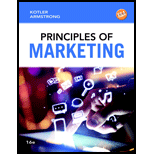
Concept explainers
Case summary: In the year 1983 Congress created the orphan designation to look into rate diseases which affects 200,000 patients. FDA offers incentives like quicker approval, tax breaks and extended patent protections. Currently more than 200 orphan drugs each year enter improvement and gain FDA approval. However these drugs are expensive for buyers. There are nearly 7,000 rare diseases that affects 30 million people in Country U each year. Currently private health plans and governments foot the bill.
Characters in the case: Company NS.
To Determine: The ethical issues surrounding orphan drugs and the reasons on whether pharmaceutical companies be allowed to charge such high prices for such drugs.
Introduction: Product life cycle is the cycle through which each product experiences from prologue to removal or inevitable death. When the product advances through these stages, its sales and productivity increments, hit the highest point, and after that mature. Marketers monitor the life-cycle stages of the products with a specific end goal to assess when another item ought to be acquainted with supplant a declining one.
Want to see the full answer?
Check out a sample textbook solution
Chapter 9 Solutions
Principles of Marketing (16th Edition)
- Home Depot Marketing and Distribution Strategiesarrow_forwardWrite the best answer in the blank. Here is your word bank: Ego, monetary risk, psychographic, physical risk, demographic, social risk, geographic, functional risk, behavioral, Super Ego, psychological risk, Ikea Effect, Classical Conditioning, Linked Prosperity, Id, J.N.D. Home Depot targets the Professional segment (e.g. contractors, builders etc). They purchase in bulk and generally have specific delivery requirements because of the types of products they purchase. Home Depot uses what basis of segmentation to target their “Pros”: _______________________arrow_forwardThis print ad is targeting a consumer that most likely falls into this Maslow’s Hierarchy of Needs category: a) Self-Actualization b) Physiological Needs c) Love and Belonging d) Safety and Security e) None of the Abovearrow_forward
- Self-image congruence models suggest that we choose products when their attributes match some aspect of the self. Beyonce’s Beehive fan club uses this theory of the self-concept: a) Looking Glass Self b) Influential Self c) Ideal Self d) Extended Self e) None of the abovearrow_forwardAnswer each question below. Use details, specifics, and examples to explain your answer. You should write five sentences at a minimum. Each question is worth 10 points. Question: According to the video watched in class, explain how Ben & Jerry’s use activism to build their brand.arrow_forwardKFC is using what specific type of marketing in this ad: a) Ethical b) Corporate c) Philanthropic d) Consumer e) None of the abovearrow_forward
- Answer each question below. Use details, specifics, and examples to explain your answer. You should write five sentences at a minimum. Question: What did you learn about social media from our class?arrow_forwardAnswer each question below. Use details, specifics, and examples to explain your answer. You should write five sentences at a minimum. Question: Discuss the principles learned in the NPR audio called I Buy Therefore I Am?arrow_forwardThis ad for Real Beauty Production is using what type of Affect: https://www.youtube.com/watch?v=qbD3MXdGKFo&t=27s a) Positive b) Visual c) Classical d) Photographic e) None of the Abovearrow_forward
- Answer each question below. Use details, specifics, and examples to explain your answer. You should write five sentences at a minimum. Question: What does it take to get consumers to try something new?arrow_forwardAnswer each question below. Use details, specifics, and examples to explain your answer. You should write five sentences at a minimum. Each question is worth 10 points. Question: Explain how marketers use scent marketing to persuade consumers.arrow_forwardQuestion: A woman shopping for a new perfume remembers her favorite celebrity wearing this brand and decides to buy it. This is called: a) Social Awareness b) Positive Reinforcement c) Social Proof d) Instrumental Conditioning e) None of the abovearrow_forward
 Principles Of MarketingMarketingISBN:9780134492513Author:Kotler, Philip, Armstrong, Gary (gary M.)Publisher:Pearson Higher Education,
Principles Of MarketingMarketingISBN:9780134492513Author:Kotler, Philip, Armstrong, Gary (gary M.)Publisher:Pearson Higher Education, MarketingMarketingISBN:9781259924040Author:Roger A. Kerin, Steven W. HartleyPublisher:McGraw-Hill Education
MarketingMarketingISBN:9781259924040Author:Roger A. Kerin, Steven W. HartleyPublisher:McGraw-Hill Education Foundations of Business (MindTap Course List)MarketingISBN:9781337386920Author:William M. Pride, Robert J. Hughes, Jack R. KapoorPublisher:Cengage Learning
Foundations of Business (MindTap Course List)MarketingISBN:9781337386920Author:William M. Pride, Robert J. Hughes, Jack R. KapoorPublisher:Cengage Learning Marketing: An Introduction (13th Edition)MarketingISBN:9780134149530Author:Gary Armstrong, Philip KotlerPublisher:PEARSON
Marketing: An Introduction (13th Edition)MarketingISBN:9780134149530Author:Gary Armstrong, Philip KotlerPublisher:PEARSON
 Contemporary MarketingMarketingISBN:9780357033777Author:Louis E. Boone, David L. KurtzPublisher:Cengage Learning
Contemporary MarketingMarketingISBN:9780357033777Author:Louis E. Boone, David L. KurtzPublisher:Cengage Learning





